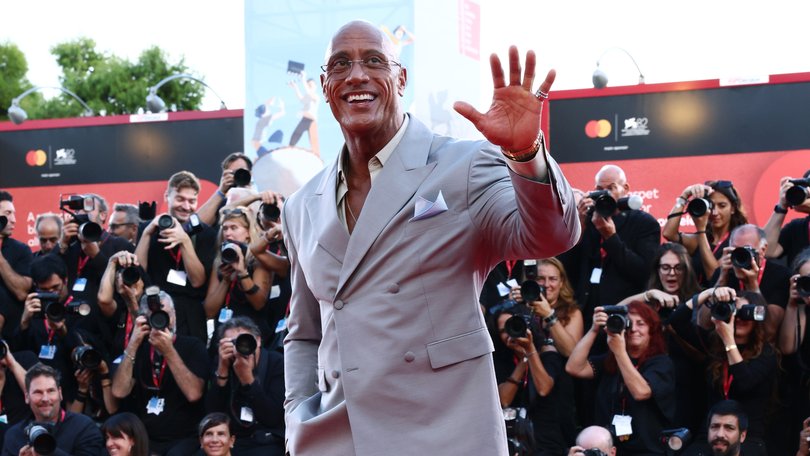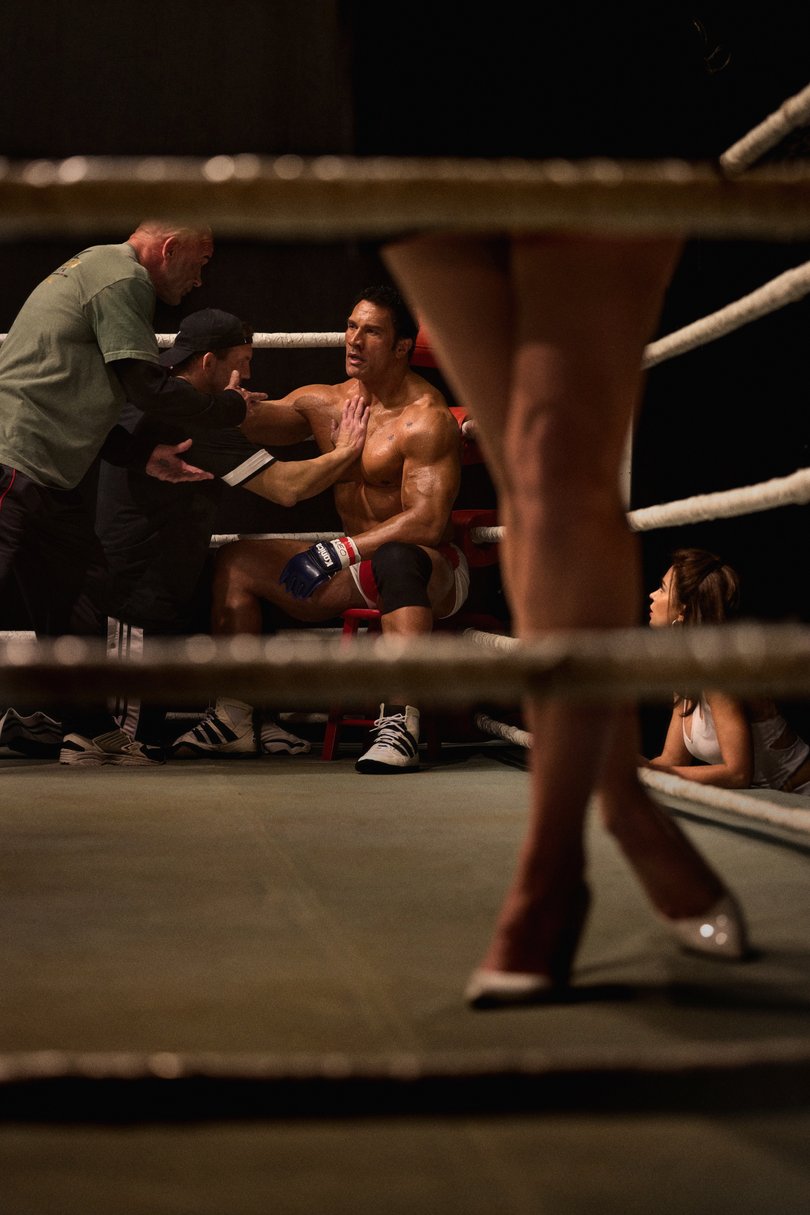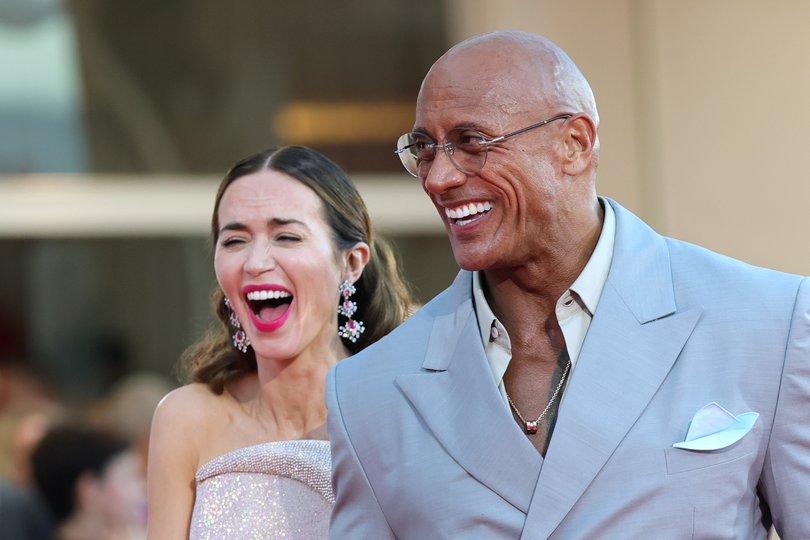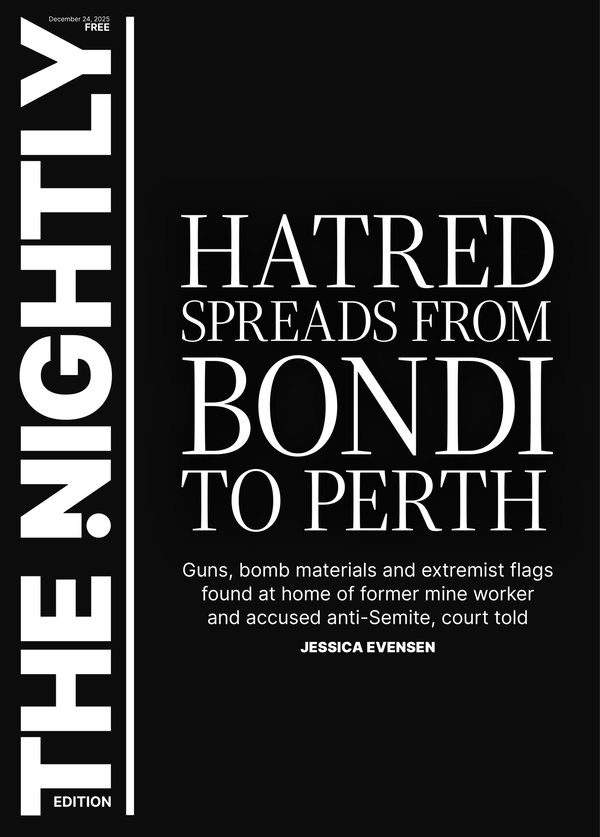The Smashing Machine: Dwayne ‘The Rock’ Johnson arrives in Venice with his most vulnerable movie yet

When Dwayne Johnson first walked onto the set of The Smashing Machine, director Benny Safdie’s gritty, visceral ’90s-set tale of the rise of mixed martial arts, even Johnson’s dear friend Emily Blunt didn’t recognise him.
“It was one of the most extraordinary things, seeing him completely disappear. Like, spooky for all of us,” Blunt said at a Monday afternoon news conference, shortly after the movie had screened for the press for the first time, with Johnson in the title role as Mark “The Smashing Machine” Kerr - a two-time UFC Heavyweight Tournament Champion and a founding fighter of the MMA movement.
“It was like everyone parted. Everyone went very quiet. I’m sure that sucked for you,” Blunt continued, turning to flash Johnson a warm smile, “but it was really extraordinary.”
Sign up to The Nightly's newsletters.
Get the first look at the digital newspaper, curated daily stories and breaking headlines delivered to your inbox.
By continuing you agree to our Terms and Privacy Policy.Johnson had to transform completely for the role, including adding a wider, flatter nose - one of the many seamless prostheses he spent four hours in a makeup chair getting applied every day. Despite being, well, the Rock, and a former pro wrestler, the 53-year-old still needed to bulk up differently to approximate the physique that had made Kerr a human brick wall and one of the most intimidating fighters of his day.
The movie starts when Kerr is 29, enters his first MMA fight and demolishes an opponent in two minutes flat. Safdie wanted Johnson to develop a late ’90s/early 2000s body t: huge traps, tight waist, lean legs. They consulted Kerr, who told them that at his peak, he’d wake up in the middle of the night, throw two chicken breasts in the microwave, eat them and go back to sleep.
“I cannot believe I even asked, but I said, ‘Dwayne, I think you need to get a little … how do I say this? Bigger, puffier?’” Safdie said in the news conference.
Johnson, of course, said he’d try anything, “But (I’m like), ‘Hey, I’m in my fifth level of life!’” he told the press corps, to laughter.
International journalists were already predicting awards for Johnson and comparing the film to Raging Bull. Safdie has said that Rocky and The Harder They Fall were influences, but also It’s a Wonderful Life, because the movie is about Kerr changing his perspective on life.
The brutal and bloody fight scenes had the audience covering their eyes, and conveyed why this sport was so controversial at its start and banned in many countries. The spine of the story, though, is one of love and redemption, as Kerr battles addiction to the opioids he got hooked on for pain management while in a volatile relationship with Dawn (Blunt), who’s either infuriatingly needy or just a strong-willed woman desiring of normal affection, depending on your perspective.

“I feel like the film, it’s not about fighting. Even fighting just happens to be what he did, and he at one time … was the greatest fighter on the planet,” Johnson said at the news conference. “It’s a love story about Mark and Dawn in this relationship, and it’s a love story about Mark and the love that he had for the thing that he did, and his struggle with trying to deliver and his overcoming his challenges.”
Johnson wanted to show a man who could rip a bathroom door in half, but also could be romantic mush around the woman he loved - and come out on the other side of his demons (Kerr overdosed twice on opioids). “He’s a beautiful soul and very caring and gentle and kind, and looks (at) life through this lens of a childlike curiosity,” said Johnson.
At the news conference, the real Mark Kerr, long-retired and just three years older than Johnson, sat front row. When Safdie said that none of them would be in that room without him, Kerr had tears in his eyes.
This movie also wouldn’t exist without Johnson. He spent decades contemplating a movie about Kerr, whom he first met in the late nineties at the peak of his fame. “He was this hero to all of us,” Johnson said. Then later he watched the 2002 HBO documentary “The Smashing Machine” and realized how much he connected to Kerr’s story.
Johnson comes from a line of professional wrestlers and he’d watched his mother, like Dawn in the movie, sacrifice her own dreams for the dreams of his father, who became one of the first Black champions in WWE history. Johnson also knew what it was like to perform with bombast and connect with crowds, and how lucky he was to still be alive, having lost many friends in the wrestling world to addiction and suicide.
After watching Safdie’s 2019 movie Uncut Gems, Johnson got in touch about working together on a movie about Kerr, he told Vanity Fair in a recent article. Life and the pandemic got in the way, but both men kept thinking about the project and were reunited through Blunt. Johnson and Blunt had stayed tight after 2021′s Jungle Cruise (he called her his “best friend”), and Blunt and Safdie had become friends on the set of Oppenheimer.
Johnson said he had been in deep reflection about his career as a guy who does global blockbusters, and was wondering if he was finding it fulfilling anymore.
“The box office … can push you into a category and into a corner, and ‘This is your lane, and this is what you do, and this is what people want you to be,’” Johnson said at the news conference. “And I understood that, and I made those movies, and I liked them, and they were fun, and some were really good and did well, and some not so good.”
In a way, his path is like Kerr’s in the movie - under pressure to deliver, winning becomes the enemy, a constant weight on your shoulders. It was his conversations with Blunt, he said in the news conference, that made him realize that acting was a place where he could process the life he’d lived to get where he is now. “There was just a voice inside of me, a little voice said, ‘Well, what if I could do more, and I want to do more, and what does that look like?’”

He added, “I looked around a few years ago and I started to think … am I living my dream or living other people’s dreams?” … I’ve been scared to go deep and intense and raw until now, until I had this opportunity to do this” - a movie that’s put him in the Oscar conversation for the first time.
Johnson paused a long time and appeared to get emotional when a reporter asked him if he used his relationship with his dad as an inspiration. Not the tenderness of the role, Johnson said. “I mean, he was homeless by the time he was 13, so his capacity for love was very limited. And that’s the man that raised me. It’s tough love.”
Johnson’s dad died suddenly in 2020 and he often thinks about how the man struggled with “a tremendous amount of shame” - something that his dad shared with Kerr, who has talked about it with Johnson. But what he really took from his dad into the role was the hunger to be a pioneer in a sport that no one took seriously, and a desire to keep putting in hard work with his own hands, despite any obstacles.
“That’s what Mark does, and that’s what my dad did,” he said, before another long pause.
“Thank you for the question, by the way,” he said to the reporter. “Because I always want to try to do my best to, you know, like, remember the good stuff.”
© 2025 , The Washington Post
